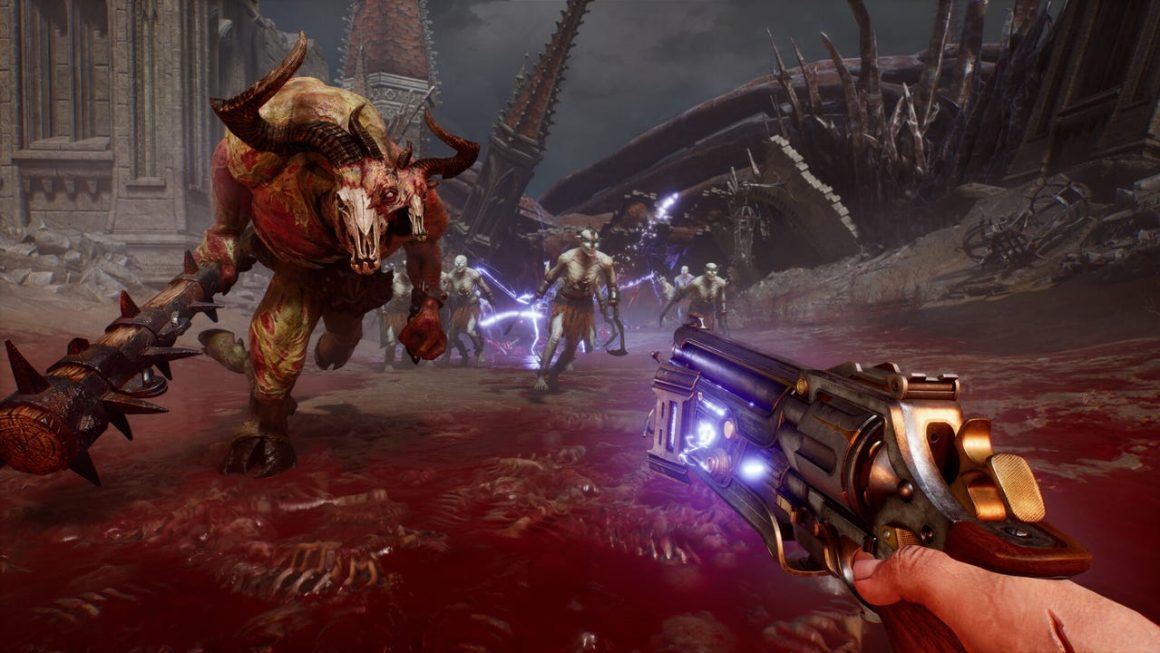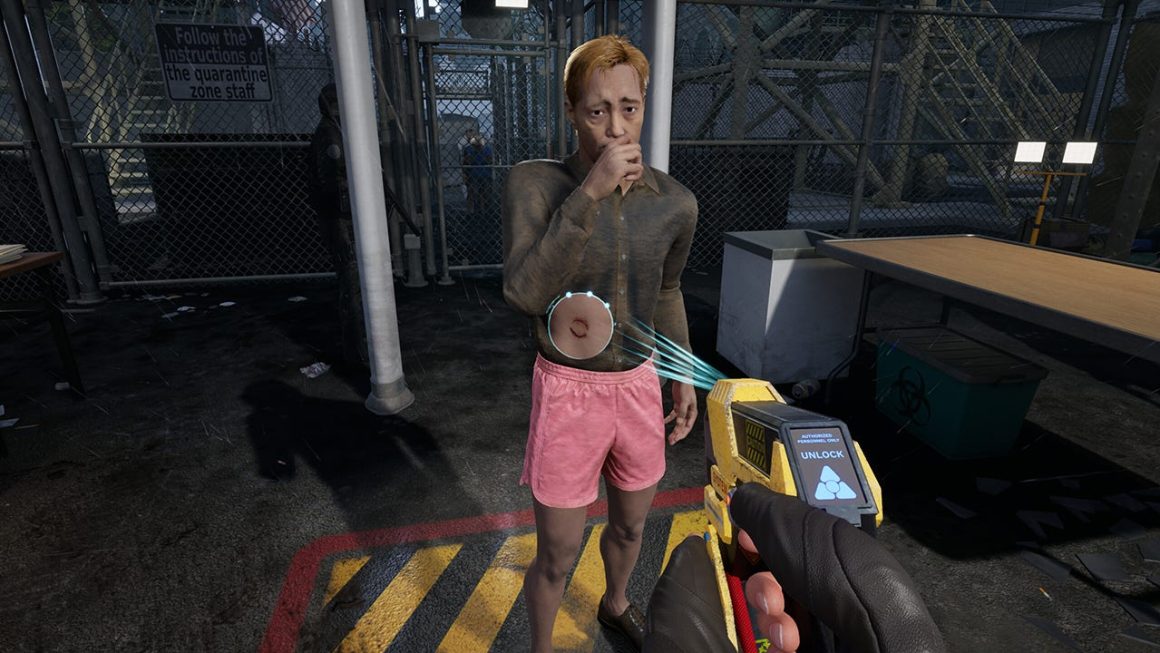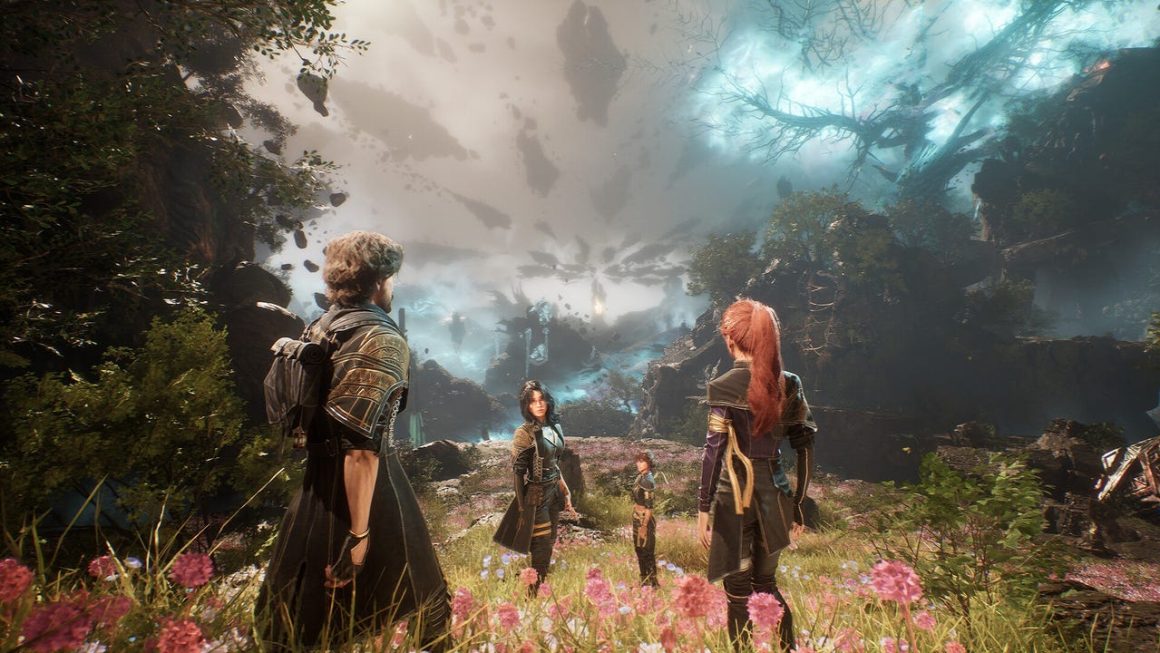As the gaming industry buckles under the weight of constantly escalating triple-A expectations – not to mention triple-A budgets and triple-A development times – here comes Painkiller, a roguelike first-person shooter that is so comfortable being the mid-tier, low-stakes game that it is that I feel like it should come with a beer koozie and a cold can of your favorite brew, because that’s exactly what I picture most people having next to them while playing this game in co-op, online, while chatting with friends. Is Painkiller going to be the best first-person shooter of the year? Not while Doom: The Dark Ages exists. Is it going to have the best story of the year? Hell, it’s barely trying in that department – and that’s OK. But the revival of this bullet-hell first-person shooter delivers exactly what the original did: a minimal-stress, mostly mindless (in a good way) three-player cooperative FPS that lets you tune your weapons, perks, and difficulty for each new run across numerous levels. And there’s no live-service nonsense. In short, it’s simply a decent time, and we need more of that in the video game industry.
The demon, hell, and purgatory schtick starts right away with Painkiller. You’re a wisecracking demon-hunter dropped straight into Purgatory, but that’s apparently OK with you because you’ve got demons to shoot. Your hub from which all things happen is Purgatory’s Crossing, a safe space where you can choose your character, weapons, and tarot cards before either starting a match (called a raid here) or seeking one out. No matter which character you choose, there will always be three of you in a raid, with non-human players filled in for by bots – bots, I might add, that seemed reasonably capable during my time with the preview build. I started out as Ink, whose energy soul restoration (aka health) is improved by 20% before later trying Void (weapon damage +10%) and then Roch (+25 health points). A fourth character I didn’t get to try is Sol, who has 50% higher ammo capacity than her counterparts. They chat with each other on occasion during matches all on their own, which I appreciated as it broke up the quiet repetition intentionally baked into the gameplay loop.
Weapons-wise, I had a blast with the railgun-like Stakegun, which launches impaling wooden stakes with pointy edges at extremely high velocities. I quite loved how it would go into an enemy and pin them to the wall behind them, as this added a welcome bit of oomph to this weapon. The grenade launcher alt-fire came in quite handy as well when it was charged up and ready to go. The other weapon I spent the most time with was the Electrodriver, a machinegun-like sidearm that shoots tiny rapid-fire shurikens and has a secondary lightning-bolt attack that will zap any demons in your immediate radius. There’s also a default melee spinning blade weapon that’s useful for cutting down the weakest enemy types. All of these are permanently upgradeable for future raids using the in-game currency earned from racking up kills, taking down larger minibosses, and achieving objectives.
That brings us to ingredient number three in Painkiller’s familiar roguelike stew: deckbuilding. You can purchase tarot card draws to add buffs and enhancements to each run. For instance, one of the cards I drew, Profane Blessing, adds 30% damage to my weapons. Yup, I’ll take it, please and thank you! Note that the cost to draw cards is fairly steep – at least in the earlygoing chunk I played – so don’t expect to just keep redrawing from the deck until you get the exact modifier you’re hoping for.
Once you’re actually roaming Purgatory actively hunting demons, gameplay is pretty typical boomer-shooter. The bad guys aren’t smart, but they are plentiful, but as mentioned earlier, you’ve always got help, be it human or bot. And thanks to that whole never-roam-Purgatory-alone thing, if you go down, your allies can revive you, which adds a bit of extra tension to a match when you’re down to one teammate that’s still upright and the other two are bleeding out. It sure is nice to get that resurrection, though, rather than have your run come to an unfortunate end. Meanwhile, the graphics probably won’t blow your socks off and the dialogue is intentionally pretty cheesy. But again, Painkiller doesn’t take itself too seriously, and that’s just fine.
If you need a game to entertain you while you’re chatting with one or two friends online that doesn’t require a ton of investment (by any definition), Painkiller – out October 9 for PC, PS5, and Xbox Series X|S – seems like it might do the trick. Maybe that won’t be enough for some in a year that is absolutely jam-packed with killer games, but for the specific purposes of hanging out online and gaming together, you could do a lot worse than Painkiller.
Ryan McCaffrey is IGN’s executive editor of previews and host of both IGN’s weekly Xbox show, Podcast Unlocked, as well as our monthly(-ish) interview show, IGN Unfiltered. He’s a North Jersey guy, so it’s “Taylor ham,” not “pork roll.” Debate it with him on Twitter at @DMC_Ryan.




купить аттестат 11 классов в москве купить аттестат 11 классов в москве .